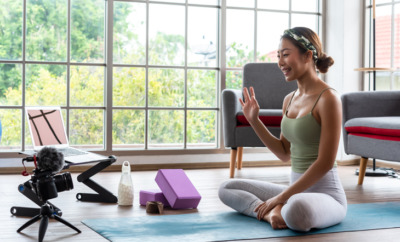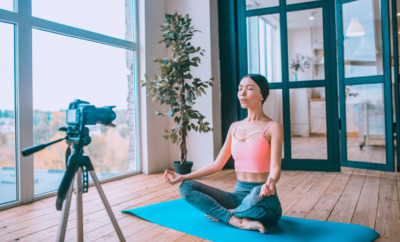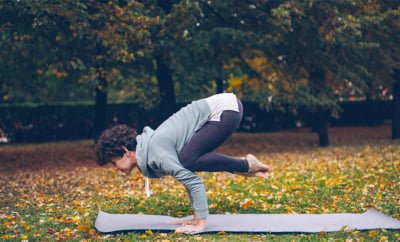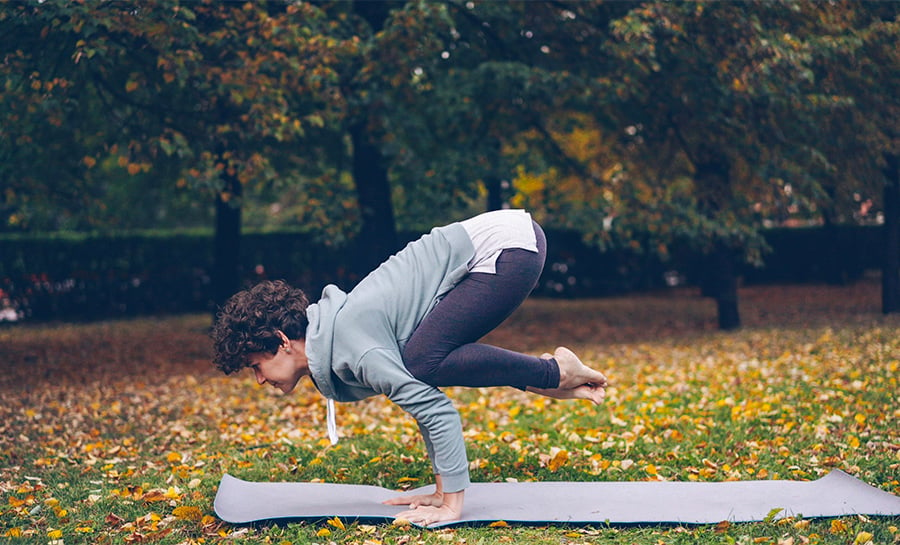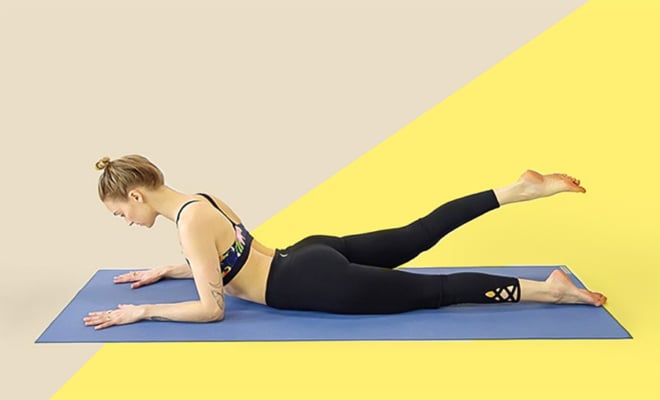If You Teach Yoga Online, You Need to Read These 5 Tips

Welcome to the wonderful world of teaching yoga online! Whether you’ve been teaching online yoga for years, preparing for your first-ever online class, or somewhere in between, there are many benefits of bringing your yoga teaching online.
There are also many challenges and important things you need to know and keep in mind.
That’s why we’ve teamed up with our friends here at YouAligned to share these important tips that all yoga instructors need to know when it comes to teaching online yoga.
Online Yoga Teachers: Follow These 5 Tips to Set Yourself Up for Success
From best filming and teaching practices to finding your niche, read on to learn our top tips to set yourself up for online teaching success!
1. Quality Content Is Important
When the pandemic hit and yoga studios closed, many teachers resorted to teaching online, and predominantly via Zoom. Living rooms became the classroom and so began the huge spike in people around the world teaching – and taking – online yoga classes.
Many teachers are still utilizing this platform for their online teaching, and that’s great! Regardless of which platform you use to teach, what we can refine is the quality of our online classes.
Quality content is everything from how you cue (more on that in #2) and guide your students through a safe online yoga practice (#3), to the relationship you cultivate with your students (#4). Quality also includes your framing, lighting, audio, and overall user experience.
Framing: try to get your entire body and yoga mat in the frame when you teach, and be sure to demonstrate while you guide your students through the class. Also, try your best to avoid a busy background, or placing your mat against the wall or a door. Middle of the room is best whenever possible.
Lighting should be bright and natural. Try placing your camera or device in front of a window so it back lights your space. If you have a ring light or can afford to invest in one, use that too! Or you can improvise by setting a few lamps up around your camera.
Audio is another aspect that often misses the mark. Be sure to speak clearly and audibly without whispering or yelling. Work to eliminate background noise and if it’s accessible to use or invest in a microphone, there are many quality, affordable options online.
All of these aspects will improve the quality – and thereby – the overall experience of your online classes.
2. Audit Your Own Cuing
You’ve probably heard this before: the more we teach, the better we become at teaching. Taking this one step further, the more we as teachers practice yoga, the better we become at teaching yoga.
This is because when we practice, we notice subtle nuances that either contribute or detract from a great yoga class. Cuing is one of these key nuances.
Let’s try it: notice the difference between saying, “Look at your foot” versus “Look down at your front right foot.” The first cue almost guarantees that your students will have to look at the screen to see what you’re doing or asking them to do. And if you’re not demonstrating (as mentioned above), they’re really going to feel lost.
By adding those small yet important descriptor words, you’re ensuring your students know exactly what you mean, without even having to look at the screen. Clear, direct, and specific guidance is always important when it comes to cuing, but especially when you’re teaching yoga online.
3. Safety Is Key
Another reason that cuing (from the previous main point) is so important? For your student’s safety.
As yoga instructors, we always want to cultivate the safest experience possible for our students, and when we’re teaching online, safety is key since we’re not physically there with the person to ensure their form and alignment is correct and safe.
Be sure to offer modifications, variations, and also permission to explore other options or back off from a pose if the student needs to. Demonstrating proper alignment and how to use yoga props is helpful, as is offering a few alternatives for more challenging poses.
For your safety as a yoga instructor, it’s also important to have yoga insurance.
Most yoga studios require their teachers to have insurance, and you should do the same for your online teaching.
A commonly asked question is whether teachers need to be insured for their online teaching. The answer is a definite yes. And whether you’re offering pre-recorded online yoga classes, or live streaming, you can find insurance coverage that protects your teaching.
For a limited time, beYogi is offering YogiAproved.com readers $30 off your annual premium, dropping the annual cost to $149. Learn more here.
4. Engage With Your Students
If you can see your students in real time while you’re teaching online, great! Acknowledge them by name in class: Great form in your Plank Pose, Ashley!
If you can’t see or interact with your students during class, that’s ok! You can still acknowledge that you’re grateful for their support and presence.
Either way, it’s also important to engage with your online yoga students outside of class. Connect with them on social media. Offer up a survey or invite them to share their questions or requests for your next class. If you have an email list, you can do the same here.
Students love being involved in your class planning, and will appreciate being included and given the opportunity to share. Bonus – their requests and feedback will inspire you!
5. Know Your Niche
You can take your online yoga teaching in a million directions, and while that’s exciting, it can also be a bit overwhelming. When it comes to marketing yourself and your online yoga offerings, it’s important to be as clear and specific as possible.
Your niche can be the type of yoga formats you teach. Perhaps you specialize in Yin and Prenatal Yoga. Wonderful – focus on that in your promotions! Your online teaching niche can also be your target audience. If you have a passion for helping people recover from past trauma through yoga, amazing – focus on marketing to that demographic specifically.
Whatever your specific yoga niche is, find it, OWN it, and market it accordingly. The community that you’ll build around your niche will continue to grow and thrive as a result.
Follow These 5 Tips for Online Yoga Teaching Success!
With these five professional tips, you’ll be on your way to creating quality online yoga content that meets your students’ needs. These tips will set you up for success.
Interested in learning more about how to create successful online yoga classes? Check out this comprehensive guide.
For a limited time, beYogi is offering YogiAproved.com readers $30 off your annual premium, dropping the annual cost to $149. Learn more here.


This Month's Letter
From the Editor
Monthly motivation and food for
thought from our founder.




